
..........................................................................................................................................................................................................
consequences
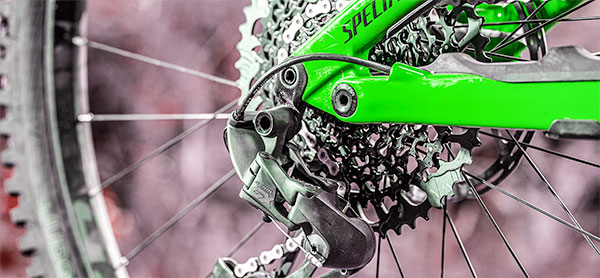
newton's third law of motion contends that every action has an equal and opposite reaction, something that eastern philosophies have long known as karma. unfortunately, under certain circumstances, those opposite reactions have sometimes been unintended. as perhaps a superficial example, a section of the loch gorm road was in the habit of flooding over a corner section, whenever there was heavy rainfall. this was caused by water cascading down a disused farm track, beore pouring onto the road
in order to remedy the situation, the council's roads department cut channels into the grass verge to have the water drain into the ditch alongside. but all did not go to plan; those channels were cut with an upward slope, meaning that the flood water had little chance of ever making it to the ditch in the first place. having realised their error, the channels were extended into the ditch, but instead, the water from the track initially poured into the ditch, then along the verge channels and onto the road, simply re-creating the problem they had attempted to solve.
it would appear, on recent evidence, that the problem has finally been solved, though i've not examined closely enough to recognise how that has been achieved. but it does clearly demonstrate that the equal and opposite reaction discussed above, is not always the one hoped for. life at large is full of situations such as this; were that not the case, newton might have moved onto another law of motion altogether, relegating his third to the backburner for consideration another day.
the press-fit bottom bracket bearings on my cyclocross bike, while still serviceable, are undoubtedly in need of replacement, and to effect that sooner rather than later, i have purchased what i believe to be suitable substitutes. i will learn whether that is the case when i eventually remove the crankset and measure the new set against the present incumbents. the more astute amongst you will perhaps wonder why such comparison is necessary; surely i simply ordered the correct bearings following rudimentary examination of the specific type of bottom bracket fitted to the bicycle?
that is, of course, exactly what i attempted to do, but there are so many similar standards in existence, several of which have been modified by the frame manufacturer, that figuring out just what is required can be something of a guesswork minefield. sadly, when frame and component manufacturers decided that they were the purveyors of the next big thing in bottom brackets, they seem to have failed to consult with their peers, leading to a myriad of standards, many of which are all but identical, but which engender the question amongst individuals such as myself "but are they?"
yet again, more unintended reactions.
but a situation that occurred in a similar timeframe to the above mentioned bottom bracket debacle, is that of internal cable routing. the latter is not entirely new; even in steel frames from yesteryear, there were those which concealed the rear brake cable within the top tube. on my cyclocross bicycle, the front disc-brake hose enters the top of the left fork leg and exits near the fork-mounted caliper. to my mind, that makes cable replacement a tad more fussy than one affixed to the exterior of the fork leg. however, following a sunday morning meeting with a good friend i haven't seen on the island in many a long year, yet another presumably unintended set of circumstances was brough to bear, very much at the behest of the practice of routing the cables internally.
as we set off in heavy winds yesterday morning, ascending the opening gradient, my friend was struggling to keep the bicycle in gear, the chain skipping from one sprocket to the next. the difficulty was in knowing whether the chain was trying to shift up the block, or down. either way, it was failing in this part of the process. whenever such a situation has occurred on my own bicycles, or on those on which i have been tasked to work, the simplest means has always been to flick the chain onto the smallest sprocket, before clicking up one gear.
if the chain fails to shift onto the next sprocket, then the cable needs more tension. should it shift immediately and sound as if it is 'hunting', the likelihood is that the cable is too tight. of course, an even simpler method was to shift to the small sprocket and visually check the cable, whether it was hanging loose or tightly clamped. but on my friend's internally routed carbon frame, there was no means of visual appraisal. if the frame designers ever considered this problem, it appears that they gave it short shrift.
having watched both saturday's and sunday's paris-roubaix, it was notable that whatever technical malfeasance affected the riders, the simplest solution has become that of pulling a replacement bicycle from the team car roof, and sending the rider on his or her way. any necessary fix can be undertaken later, back at the hotel.
unlike the professionals, the velo club does not have the services of a following team car, replete with wheels and bicycles to follow the sunday ride. i would tend to think that's a situation shared by the majority. but it seems that, in order to make the modern-day bicycle more aesthetically pleasing, those who probably don't have to adjust their gears at the roadside, have created a velocipedinal version of newton's third law. thankfully, from my point of view, tom ritchey is not amongst their number.
monday 8 april 2024
 ..........................................................................................................................................................................................................
..........................................................................................................................................................................................................the pain before the storm
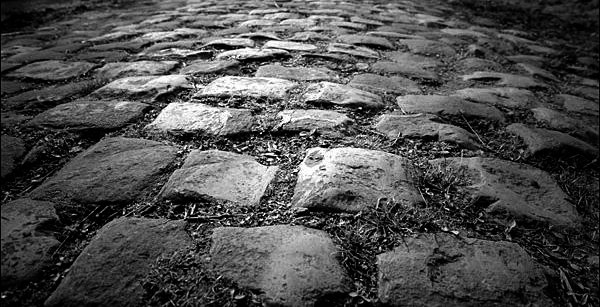
these monologues are generally written the day before they appear on the web, but since many are what i might categorise as standalone in concept, and rarely time-sensitive, it creates little in the way of a problem. however, what follows was scribbled yesterday (saturday) with reference to that which takes place today (sunday), and depending on when you're reading, the result of paris-roubaix will already be known. rather obviously, at the time of writing, i have no idea who finally beat the cobbles into submission.
however, now that we're agreed on the present situation, allow me to proceed.
over this weekend, much of britain and ireland has been at the mercy of storm kathleen (coincidentally, the name of my sister-in-law), a state of affairs that caused the cancellation of all saturday's ferries to and from the island. situations such as this offer the perfect opportunity for self-aggrandisement; i'm determined that the weather will not prevent my heading south-west to debbie's for my traditional soya latte and double-egg roll. so, despite an 80kph south-easterly, i headed out on the cyclocross bike, with the pre-designed intention of nipping onto the grass at uiskentuie to ride out the severe crosswind to foreland road end.
that stretch of road was, to be fair, the only 'iffy' part of the journey, but if the gusts were ever likely to blow me off the bike, i was pretty much guaranteed a soft landing. for those who are at all interested, it never happened.
lest you think i exaggerate affairs purely for my own ego, with the specialized crux sitting against the wall outside while i demolished a double-egg roll, a gent entering to purchase a takeaway coffee and sandwich, expressed his surprise that anyone in their right mind, would be out cycling in such adverse (and by implication, dangerous) weather. attempting to offset what might have been admirable and possibly accurate criticism, i pointed out that i had, in fact, been out in a lot worse.
however, by way of justification, there was a certain degree of method in my madness. following the sunday morning ride, i will scoff a cheese and tomato toastie to accompany my latte, then hopefully pedalling as speedily as conditions will allow, in order to watch the 2024 edition of paris-roubaix. you see we are, as a section of the population, a bunch of hypocrites. i doubt there are any amongst you who have not railed in public or on social media, about the state of britain's roads, about the potholes that almost swallowed your entire bicycle, and about the failure of your local council to carry out timeous repairs.
yet, come de ronde and paris-roubaix, we sit in front of the telly box, complaining vocally about the propensity of the professionals to ride the smoother gutters, rather than the cobbles that attracted us there in the first place. so, when opportunities such as so-called storms are placed in front of me, i feel it my velocipedinal duty to suffer the slings and arrows of galeforce crosswinds. i believe they ought to be embraced with open arms. having struggled manfully both yesterday and (perhaps less so) today, as i sit in my comfy armchair, following a nice warm shower, in my own small way, i can identify with the pain and suffering playing out in real-time on my television.
though there are several annual sportives and organised trips to both the ronde and roubaix, allowing the great unwashed to appreciate the hardships at admittedly slower speeds, not everyone has the wherewithal or the time to participate. it well behoves us, therefore, to take advantage of that which appears on our doorstep.
sunday 7 april 2024
 ..........................................................................................................................................................................................................
..........................................................................................................................................................................................................ritchey wcs cabrillo saddle

i am of the considered opinion that saddles ought best be approached with the same sense of trepidation as would be advisable when getting to grips with a herd of cattle. a work colleague of mine owns a farm on islay's west coast, a venture that possesses a herd of blue-grey cows. they are, to all intents and purposes relatively docile, but in keeping with many of the island's farms, it is quite possible that said cattle will be met standing on the road outside the farm gate.
the majority of islay's cattle herds can be shifted by making an appropriate level of noise on the approach, but the blue-greys in question have an unnerving predilection for simply remaining where they stand, staring blankly in my direction. their stance on the road would make for a very long detour were i to retreat, but i cannot deny that the fear factor was particularly high when trying to negotiate my way through and past a herd of animals considerably larger than yours truly. running away in cleated shoes is not the finest of strategies.
the same can, i believe, be said about saddles, though being trampled to death is a far less likely outcome.
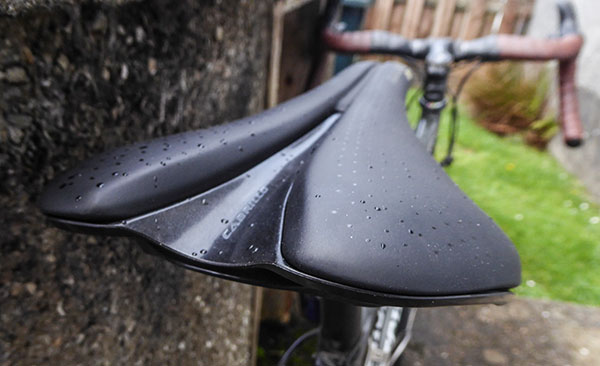
most of us have what i delight in referring to as agnostic posteriors, content to ride on whatever was affixed to the bicycle when it arrived from the shop or website. the fly-in-the-ointment would surely be for those of us who assembled our bicycles from scratch, where componentry is subject to personal choice. there's actually quite a lot to be said for buying a complete bike and having someone else pre-condition such choices, because at least when something doesn't work or prove less than comfortable, in the case of saddle choice, we can blame somebody else.
however, as one who once undertook to review cycle products on a regular basis, no matter the saddle i chose at the outset, there's a good chance it would have been replaced several times before twelve months of riding had passed. proabably scarcely enough time to become accustomed to any of them. that said, when the ritchey logic first indulged in the hebridean parcours, it was replete with a ritchey wcs saddle atop its ritchey wcs alloy seatpost. the latter has since been replaced with a ritchey wcs carbon seatpost, but for a large portion of their lives, both have been home to a saddle not from the ritchey stable. that, for what it's worth, has been a part of the agnostic posterior paradigm mentioned above.
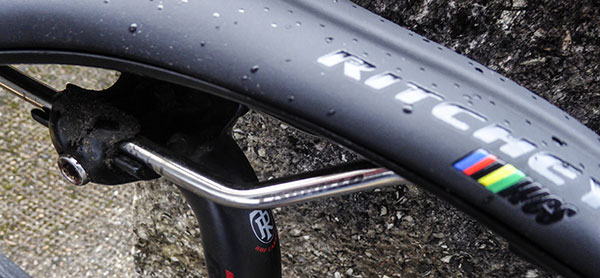
like several others, i tend to pay little attention to the saddle on any bike; when reviewing, i've found myself simply listing what was on the bike when it arrived, without necessarily expressing any considered opinion on its veracity. however, i was recently sent one of two new models released by ritchey in the past couple of months (the cabrillo), which, according to ritchey's website, is sufficiently versatile to offer comfort to both the road and gravel rider, featuring a one-piece, seamless top that is a tad shorter than usual (certainly noticeably shorter than the saddle it replaced), and sporting a central channel presumably designed to relieve pressure in the perineum. the sitting bit is filled with a shallow level of shock-absorbent padding, while the rails are isolated from the top via ritchey's patented vector-wing technology.
that pretty much covers the nuts and bolts (so to speak), but what we're really interested in is just how comfortable it is to ride?
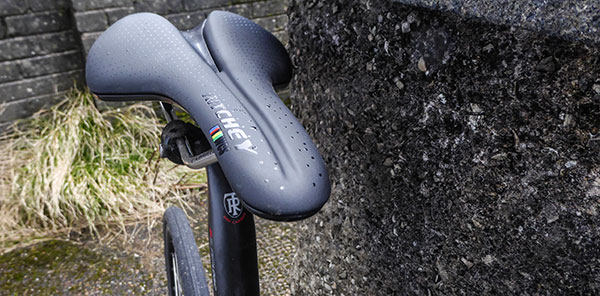
firstly, however, it has to be fitted to the seatpost, and in the case of the bracket atop all of ritchey's seatposts, there is an undeniable level of faff to be fought against. why everybody couldn't just repeat campagnolo's original single-bolt philosophy, i know not (unless it's still under patent). in this case, the bolt attaching the saddle rails to the seatpost runs at right angles to the saddle's forward direction and often requires removal of the seatpost from the frame to avoid a whole slew of inappropriate words during fitting. however, once in place, it's relatively easy to angle it up or down and move it forward or back until the desired setting is achieved.
unfortunately, prior to the first outing, i neglected to take into account that the cabrillo sits a smidgeon higher than its predecessor, meaning i had inadvertently introduced a level of height discomfort that made itself known as the ride progressed. had i written these words following that first ride, they would not have been overly complimentary. however, having now exceeded 500km on the cabrillo, i feel better qualified to make comment, but i believe it to be a saddle that i have yet fully to come to terms with.
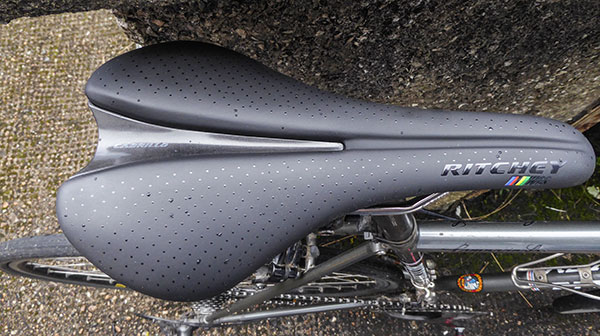
the cabrillo's form factor is substantially different than that of its predecessor, so there was always going to be a period of adjustment required. i'm still not sure if i'm ok with its shorter length; it could simply be that i took the other for granted in terms of real estate, when it was perhaps unnecessary. or maybe not. i am confounded however, by the fact that i find the cabrillo to be a bit uncomfortable in the first hour or so of riding, yet growing in comfort as the ride progresses. i have rarely had much success with saddles that feature cutouts or, as in this case, pressure-relieving channels on the top. that might still be the case with the cabrillo.
and oddly, while there's no denying the level of padding evident in the ritchey, previously this road bike and currently on my cyclocross bike, i have been using saddles that effectively sport no padding whatsoever, yet have proved highly effective over thousands of kilometres. in which case, i think it's necessary to make this part one of a continuing review, leaving the cabrillo in place for a longer period to see if my posterior is simply taking its time to approve.

it's a very well made saddle, settling in at an amenable 222g and an overall length of 260mm, with a nylon and carbon fibre shell affixed to shiny, stainless steel rails, retailing at £87.90. i don't dislike it, but currently, i don't like it as much as its predecessor (a variation of which is also to be found on my 'cross bike). time will tell and then i'll tell you.
saturday 6 april 2024
 ..........................................................................................................................................................................................................
..........................................................................................................................................................................................................the little people
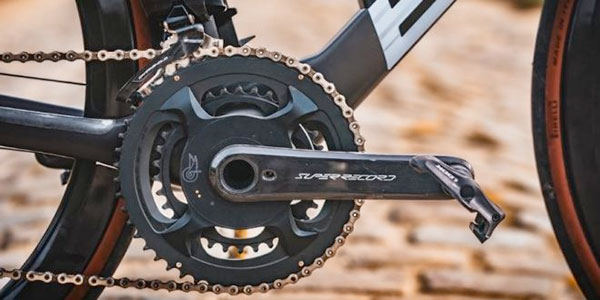
thewashingmachinepost is, in a sense, quite fortunate. despite its being (as far as i know) a rather minor player in the world of cycling media, the powers that be are not noticeably reticent to send me their press releases. while that may seem like very little about which to brag, the minor advantage is predominantly to be gained from the timing of such electrionic missives. if i might cite a recent and highly pertinent example, the official release yesterday of campagnolo's much-awaited crank-based power meter, was preceded by the official press release seven days prior to thursday's announcement.
i will admit that, in this particular case, the embargo of 4 april simply meant that i could say to myself each day, as i awoke, "i know something that other people don't". suffice it to say, in a rural island community such us this, that actually goes for remarkably little. i think i could count on the fingers of one hand, the number of folks on the island who can actually spell campagnolo, and even fewer who know what it means. but then, on the other hand, being a one-man-band has its deficiencies which have observably increased in the past few years.
my regular reader will surely have taken note that the number of product reviews on the post have substantially decreased. this is at least partly by design; however, the online cycling solar system has changed dramatically since i first put keyboard to pixel, having moved inexorably away from the written word, to the realm of moving pictures. my forte, if indeed i possess such a thing, is the former and most certainly not the latter. however, well can i comprehend why moving pictures are of more value/attraction to manufacturers/distributors, as opposed to words and a few small and frequently not particularly outstanding images.
the exception here is that of the real printed word; i appear to be one of the few media outlets still happy to not only read entire books, but subsequently publish lengthy reviews.
however, to return to campagnolo's new power meter, on receiving the original press release in advance of its appearance, i responded to vicenza's press department enquiring whether i might borrow one of these cranksets for review on the post. this, i confess, was a rather vain request, and one that i'd be rather surprised to find fulfilled, for the reasons outlined above. should you require confirmation, i should point out that road.cc were yesterday able to post a hands-on review, likely rendering any future musings i may have, somewhat redundant.
do not take this as faint protest; i am well aware of my place in the cycling firmament, and quite happy to plough my own furrow (so to speak).
however, to return briefly to the item under discussion, i harbour a healthy suspicion over the value of such devices to the average roadie. it's something i believe i mentioned relatively recently, predominantly on the basis that i think the majority of us are less than qualified to understand the data with which the likes of campagnolo's crankset provides. it's all very well being able to download the power numbers recorded during a bike ride, but what do those numbers actually mean, and how might they be improved? were i to learn, for example, that my average power output was 240 watts (i should be so lucky), such knowledge hardly teaches me anything in particular. similarly, the now ageing garmin advises of my average speed, which tends to be relatively consistent, but i admit that i have little notion as to how i might constructively get better.
hands up all those who retain the services of a personal coach? i rest my case, m'lud.
however, i have many friends who are, what i disparagingly refer to, as gadget freaks, individuals who like to be early adopters of new technology, whether or not there is any tangible benefit to be gained. to a certain extent, i think devices such as campagnolo's power meter are marketed principally to such people, mainly, and less than subtly, by stating that their data is obtained from a real-time crossing of torque value with the angular velocity provided by the integrated gyroscope, enabled by 16 strain gauges producing multiple readings, which, combined with a specific algorithm, deliver an accuracy of +/- 1%, thanks to high-frequency data sampling. as if that were insufficient, then informing their target audience that the angular velocity and torque signals are measured every five milliseconds, augmented by very high frequency, (equal to 200 hertz), provides the clearest possible reading of the data.
campagnolo ends by emphasising its high data stability, and that the HPPM Power Meter features auto compensation for temperature variation. nope, me neither. perhaps my higher grade physics has proved less useful than i'd hoped.
however, supposing the preceding information to have brought succour to the power-deficient, i can but hope they possess a commensurately healthy bank account, for vicenza's price of admission is rumoured to be close to £2000. not exactly power to the people.
friday 5 april 2024
 ..........................................................................................................................................................................................................
..........................................................................................................................................................................................................standard bearer
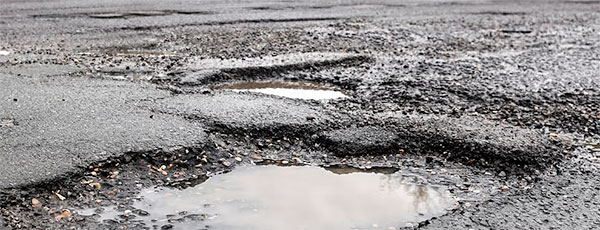
only a couple of days past, we discussed the obsession with aero, a factor within the realm of the bicycle that has become so ubiquitous, that it has inveigled its way into not only the spring classics, but, if memory serves correctly, also that of cyclocross. the fact that this has seemingly been accepted without so much a raise of the eyebrow is probably hardly noteworthy in and of itself, if only because aero bikes are now de rigeur and hardly worth bothering about.
it would therefore seem churlish to point out that come this weekend's paris-roubaix, there's every likelihood that the majority of riders will again be seen aboard aero bikes, outfitted with deep-rimmed wheels, despite no perceived requirement for aerodynamics in a race famed for its 29 sectors of pavé. and while almost every professional event these days attracts more than its fair share of punditry, it seems that roubaix has brought with it a new variation; that of pre-emptive technical punditry.
do not misunderstand my stance at this point; predicting what sort of tech is likely to be seen on the start line on sunday is easily comparable to the likes of macworld's prophecies regarding just what apple computer might reveal at any pre-announced product launch. i am undeniably eager to see just what cobble-specific augmentation might be on show this year, but less in relation to the possibilities for a cobbled victory in the velodrome at roubaix, more in favour of my (and everyone else's) day to day.
earlier yesterday i read of disquiet amongst the residents of the minginish peninsula in the north-west of the isle of skye, who have complained that the potholes on their portion of the island are so bad, that there is '...barely any road surface left'. the residents in question have apparently called upon highland council to make urgent improvements. however, the scottish government, who sought to impose a (reputedly fully-funded) council tax freeze across the board north of the border, appear to have left said councils rather short of the necessary cash to implement the necessary remedies to their roads. the majority of these are degrading at a rate probably not seen since the days during which the french built the cobbled parcours, due to cause havoc this sunday.
those who have undertaken august's ride of the falling rain in previous years may recall that a previously unkempt section of road, humorously entitled the abattoirenberg forest, was islay's veritable homage to paris-roubaix. there may have been a complete absence of cobbles, but the disastrous surface (partially created by construction of said abattoir) provided a similar experience to that of riding roubaix cobbles (i do have first hand experience of both for comparison purposes). part of that particular route has now been resurfaced, though not quite to billiard-table standards.
from anecdotal evidence, and that recently espoused by minginish, it appears that islay's roads do not exist in isolation. potholes are appearing everywhere, both north and south of the border, having become an unfortunate part of daily motoring and cycling life. i am only too well aware of the velocipedinal gravel infestation, the constitution of which lends itself favourably to pedalling the roads described above. but for bona-fide roadies, would it not better serve that particular community, if the manufacturers could lose their obsession with aero and concentrate more on what, for want of a better concept, we might call the cobble paradigm?
instead of concerning themselves with how stealth-like their products might slide through the air, perhaps they could concentrate more on how well the framesets might offset the shocks to be felt while riding over an unavoidable sequence of potholes (or, in my case, cattle grids). few of us probably care whether the frames of those cobble-killers retain every last angle of aero, as long as their robustness translates into providing a flying carpet ride across the holes in our roads. just for once, it would be nice to see technology designed to serve the customer's needs, as opposed to their respective marketing departments.
and when the local councils are provided with the financial wherewithal to bring the nation's roads up to an acceptable standard, the bicycle industry can return to its wind tunnels.
thursday 4 april 2024
 ..........................................................................................................................................................................................................
..........................................................................................................................................................................................................careful what you wish for

time was when televisions were sufficiently expensive to allow for monthly rentals, and high streets were often replete with the presence of outlets such as british relay, radio rentals and visionhire from which it was possible to choose the desired size of tv and perchance a betamax video recorder on which to save the programmes you didn't have time to watch. no on demand services were to be seen, nor were the now ubiquitous plus one augmentations of regular tv channels.
i recall my parents treating my brother and i to a seemingly endless series of ever-larger and more complex television sets, ending in possibly the first colour set in our street, and ultimately the first with a remote control. the disclaimer concerning the latter was that the long, thin black device was not truly remote in the sense that we'd accept nowadays, connected as it was to the tv by means of a length of wire. disappointingly, the first iteration of a so-called remote control was not furnished with a length of cable that would allow the device to sit comfortably on the arm of my dad's chair.
instead of rising from the armchair to turn a dial or two on the tv, he had to bend to the floor midway to lift the remote from the extent of its cable, change the channel, before resting it once again on the carpet and returning to his chair. only a matter of months past, when the batteries ran out on our own, modern-day remote control, i discovered that, in fact, there is no other means of controlling our flat-screen tellybox. i believe it may be possible to turn it on and off, but there appears no visible means of changing any of the hundreds of channels available.
granted, other than the battery problem, i do not recall any situation whereby so doing might have proved necessary, but it does rather give cause for minor concern, that the large, thin, black screen that sits 'neath the back window is entirely reliant on a device that my grand-daughter finds devilishly simple to conceal about the sitting room. what happens when the ether becomes full-up and incapable of accepting any more tv instructions? disappointingly, the above situation has resonance across many strains of contemporary life, where mankind will put more time and effort into devising a means of saving time and effort that is ultimately more energy intensive than the result.
a television advert currently showing features a middle-aged father accessing an app on his smartphone just in time to add pocket-money to his daughter's bank account as she is seen swiping her debit card to conclude a retail purchase. wouldn't it have been simpler to hand her a twenty-pound note before he left for the office that selfsame morning? i am surely not the only individual who harbours concerns over the constant drive to enable simplicity of effort. if anyone in government queries the origins of societal obesity, i believe i may be able to point them in the right direction.
the continued need to provide solutions for things that were previously not seen as problems has, of course, spread into the velocipedinal world, as more and more electronics find their way into our previously mechanical-only domain. only a few weeks past, a member of the sunday morning peloton, purchaser of a pre-loved road bicycle featuring an electronic groupset, found the chain being switched to the big ring without user input. on further investigation, it transpired that the previous owner may well have opted to pre-programme the electronic transmission to suit his own predilections via a ubiquitous smartphone app.
and though not directly connected to such untoward manifestations, one week later, he was to be found aboard his older, mechanical setup, because the battery had died on his recent purchase. i believe that's what might be referred to as a first world problem.
i own a bicycle lighting system that includes a downloadable smartphone app, allowing me to stand in the comfort of my own kitchen, independently altering the flash sequence of front and rear lights, deciding how many static minutes are allowed to pass before they switch off, and, indeed, switching them off or on. considering at least two of the latter operations require me to be within visual distance of the bike-mounted lights, i do have to ask why?
there have been theoretical discussions on the possibilities afforded by electronic/hydraulic braking systems, akin to the abs systems fitted to most modern automobiles. should that come to pass, and i have every faith that it will and probably sooner rather than later, we will become even more subjected to the apparent need to save effort where there is no need or demand to do so. though i am not narcissistic enough to think that everyone rides a bicycle for the exact same reasons as do i, it would seem a reasonable assumption to think that sunday morning rides all across the world exist for the same reason: exercise, fitness and enjoyment.
i despair somewhat that those sunday rides will extend backwards into the previous saturday evening, checking that batteries are suitably charged, that there's an app on your smartphone to allow immediate upload of strava data in real time, and that the gears are programmed to make abrupt use of the big ring whenever the chain reaches the 18 sprocket. well do i know that my luddite tendencies have become ever more acute as i age less than gracefully, but effort, is effort, is effort.
of course, nobody can force us to make use of this use of technology, but we all know how that's worked out so far.
wednesday 3 april 2024
 ..........................................................................................................................................................................................................
..........................................................................................................................................................................................................normal
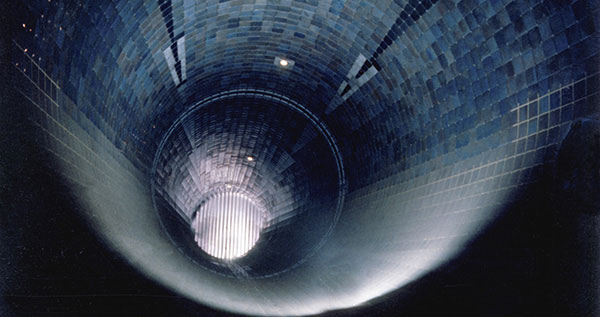
it's at times when the headwind along uiskentuie strand is blowing directly in your face, that you begin to learn who your friends really are. though i would be likely to classify it as simply an extension of derny pacing, would that friends or acquaintances driving in the same direction into that headwind slowed down just a smidgeon and drove carefully up front, allowing the velocipedinally downtrodden a certain degree of shelter. but no; the best we're likely to get is a toot of the horn and a flash of lights as they scurry past, all but oblivious to that sturdy headwind.
yet even now, i feel a touch of sorrow for those visitors who have gleefully rented e-bikes for at least a portion of their hebridean holiday. few will ever have experienced headwinds like those which are common on the isles, yet, without the advantages bestowed by a set of drop-bars, they will have to contend with the oppressive draught while sat bolt upright in the saddle. and it will hardy have escaped your (or their) attention, that the standard e-bike possesses very little in the way of aerodynamic properties.
the latter is seemingly of overarching concern to the average road bike manufacturer, which, as an industry, seems hell-bent on occupying every unoccupied wind tunnel within shouting distance. for the naysayers, 'tis but a matter of witnessing the extent to which many have stretched to provide the professionals, and subsequently you and i, with machinery that reputedly cheats its way through the atmosphere, allowing a greater degree of laissez-faire from each protagonist. at least, that's what we're told.
but it occurs to me that, in the uk at least, we're far more likely to experience the sort of conditions seen during sunday's ronde van vlaanderen than the sunny days witnessed during those three weeks in july, or august's visit to spain. in the past few days, my youtube feed sporadically offered videos of heathrow bound aircraft dealing with the iniquities of storm nelson, a breeze that seems not to have troubled the upper reaches of the nation. in situations such as these, i'm sure you'll agree, aero isn't all it's cracked up to be.
yet the persistence within the industry is plain for all to see. on the velo website only yesterday, was a photographic reprise of the bicycle technology to be seen at the tour of flanders, including neat tricks to keep bottles and garmins in place, along with knee-breaking chainring sizes. but the caption placed under an image of a visma-lease-a-bike cervelo stated, "Aero bikes are the norm at this race now.", a statement that underlines all sorts of wrong. for starters, if we accept that wind-tunnel testing is not the cheapest of pastimes, it is readily plain from the above mentioned caption that everyone and their best friend is doing it. but if that's the case, where's the advantage?
for you and i, the end result must surely be more expensive bicycles that confer not one iota of tangible advantage as we pedal towards the coffee stop into an oppressive headwind. the professionals ride whatever it is with which they are provided, at great cost to the manufacturer; yet it appears they may be spending their money needlessly.
monuments such as the ronde and the upcoming paris-roubaix are not races where out and out speed will prove the winner. van der poel's race-winning move was at possibly one of the slowest parts of the race; more down to the dutchman's expert bike handling and impressive power. his white canyon was hardly the decider: movistar also ride canyon bikes, as does the rest of van der poel's alpecin-deceuninck team, yet van der poel won by over one minute, and the closest canyon bike was that of gianni vermeersch in 23rd place. which leads me to think it may have been the rider, rather than the bicycle.
yet, in an extreme example of aero behaviour, verging perilously close to that of the weight-weenies, matteo jorgenson's cervelo featured plugs over the bolt holes to improve aero efficiency. granted, jorgenson was the only rider to remain close to van der poel as he made the winning move, but at the risk of labouring the point, that was at possibly the slowest part of the race. virtually every rider was aboard machinery equipped with deep carbon rims, aero-shaped frames, and concealed brake and gear cables, all of which are currently fashionable, and more than likely do provide all the professionals with some sort of advantage. but note that i stated 'all professionals', by which i am inferring none have any advantage over the others.
sunday's ronde van vlaanderen was highly entertaining, but entirely because of the riders not because of the technology. subjectively, however, i'd be quite prepared to argue that it was no more entertaining than peter sagan's victory in 2016, or when eddy merckx did likewise in 1969 or 1975.
lord voldemort was right about one thing: it's not about the bike.
for those who didn't notice, i should admit to the fact that yesterday's article was an april fool, entirely concocted by me with the complicit assistance of dave arthur. sorry if you were actually looking forward to the purchase of a grass bike. none of the products mentioned, as far as i know, actually exist.
tuesday 2 april 2024
 ..........................................................................................................................................................................................................
..........................................................................................................................................................................................................